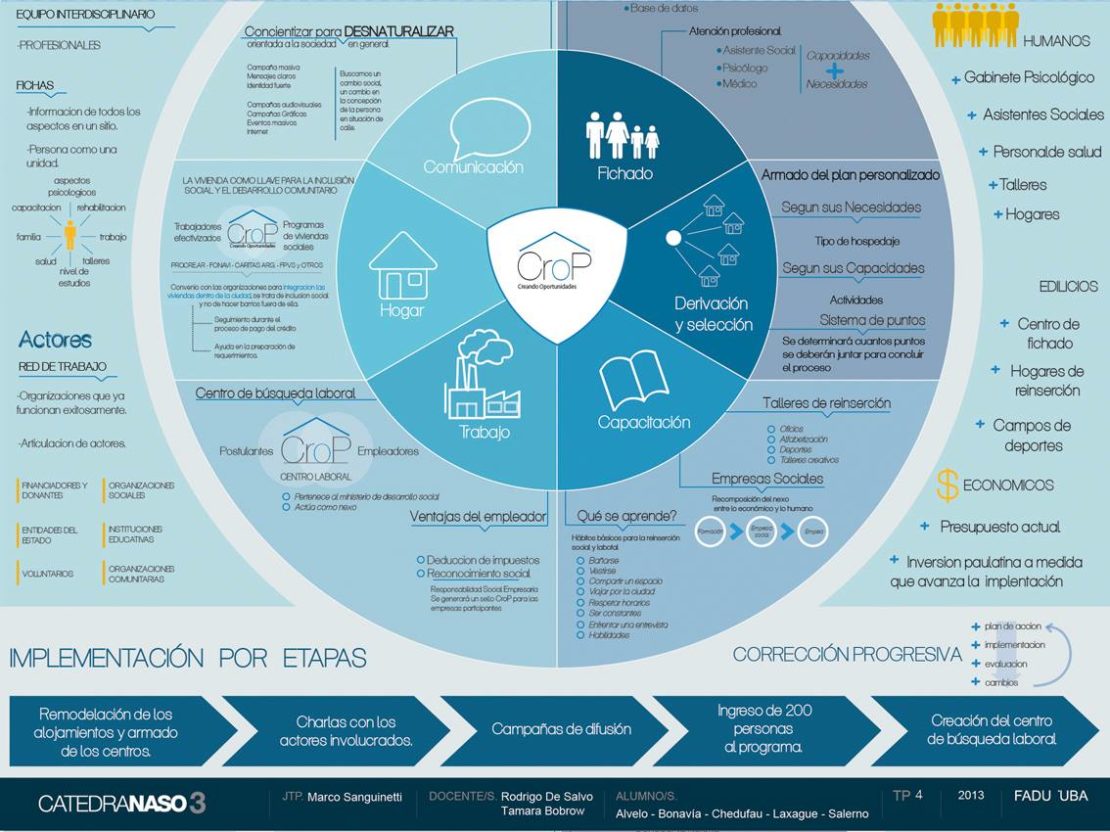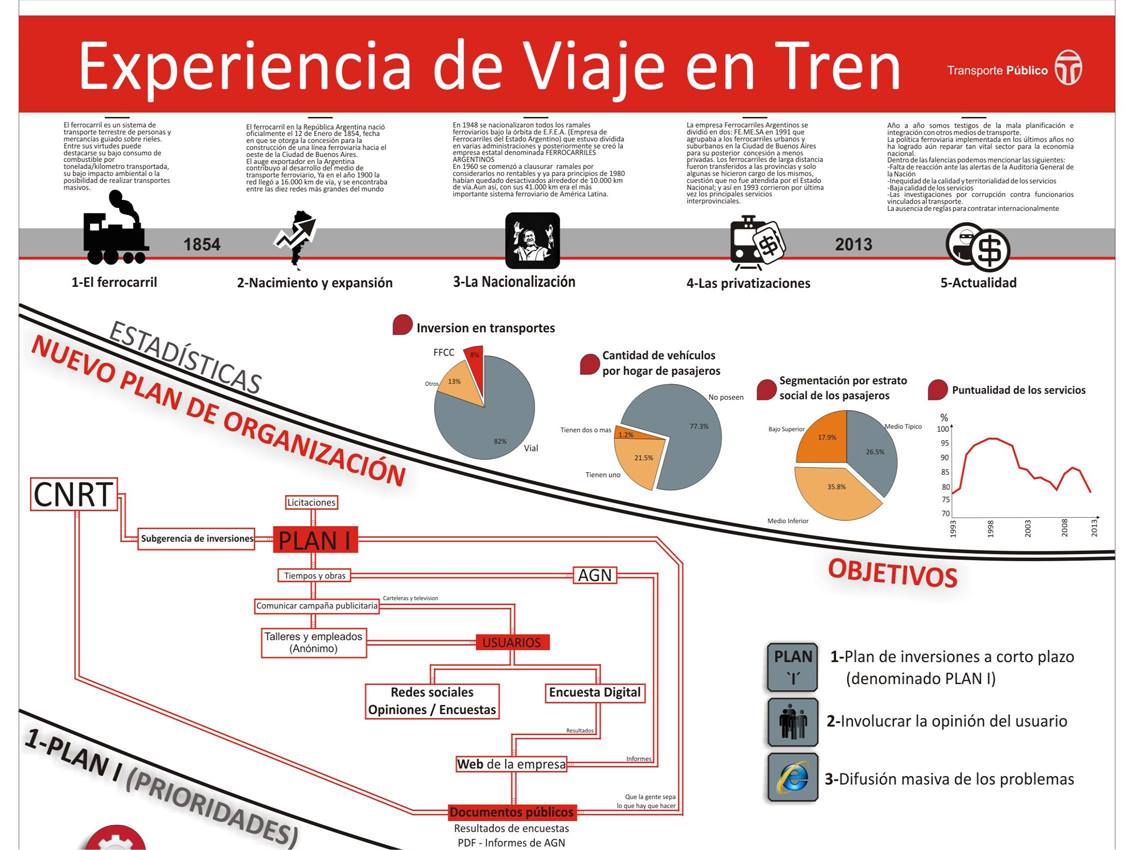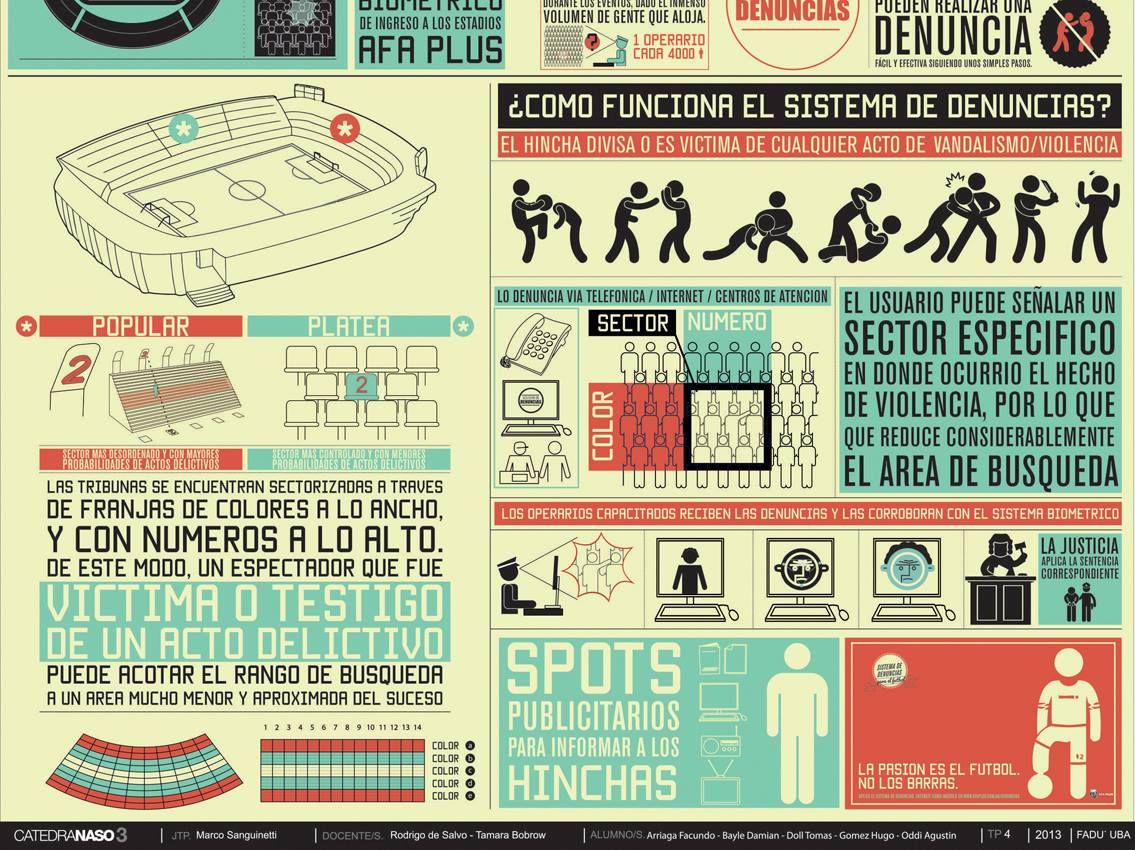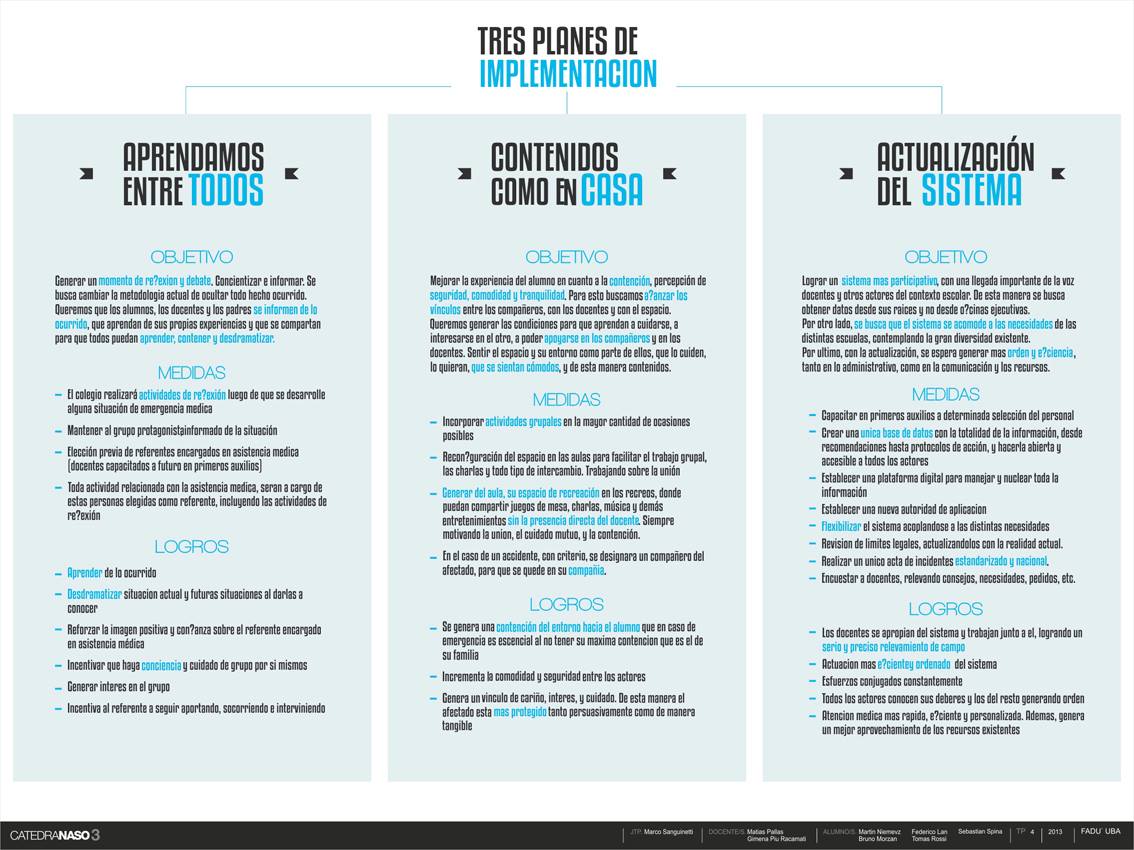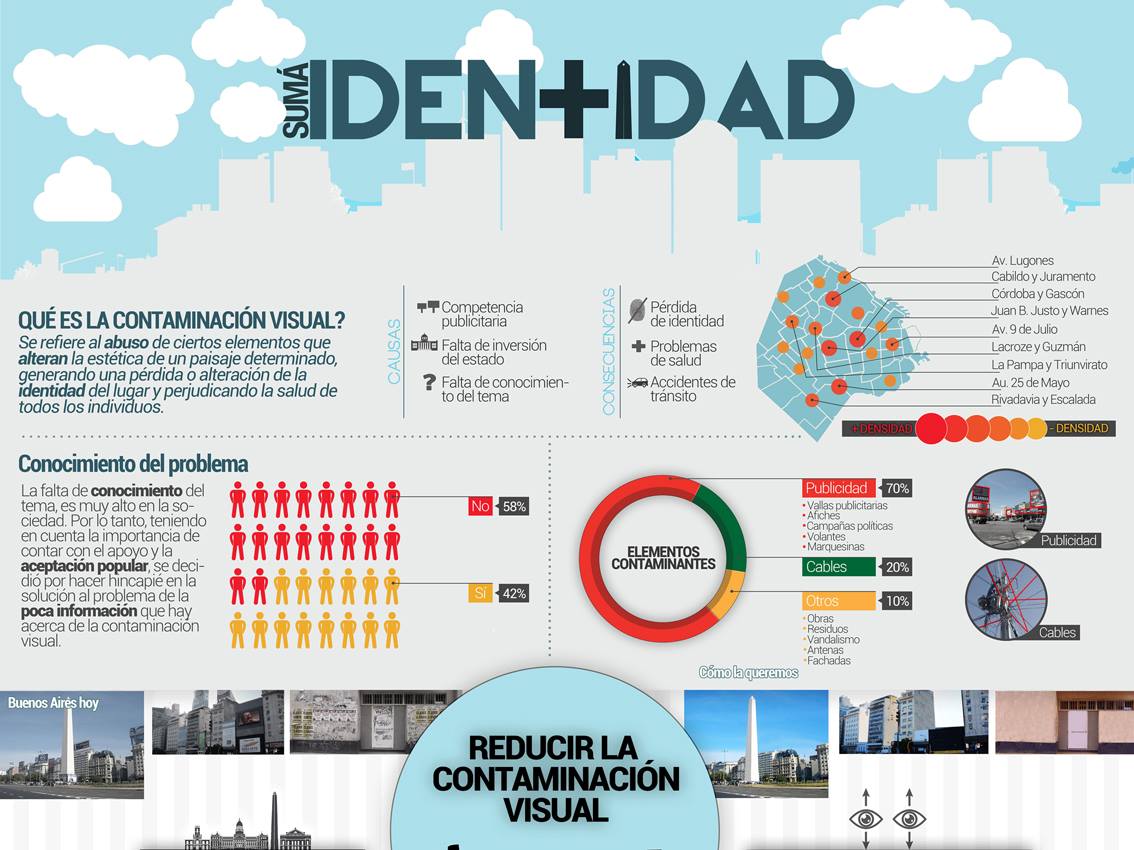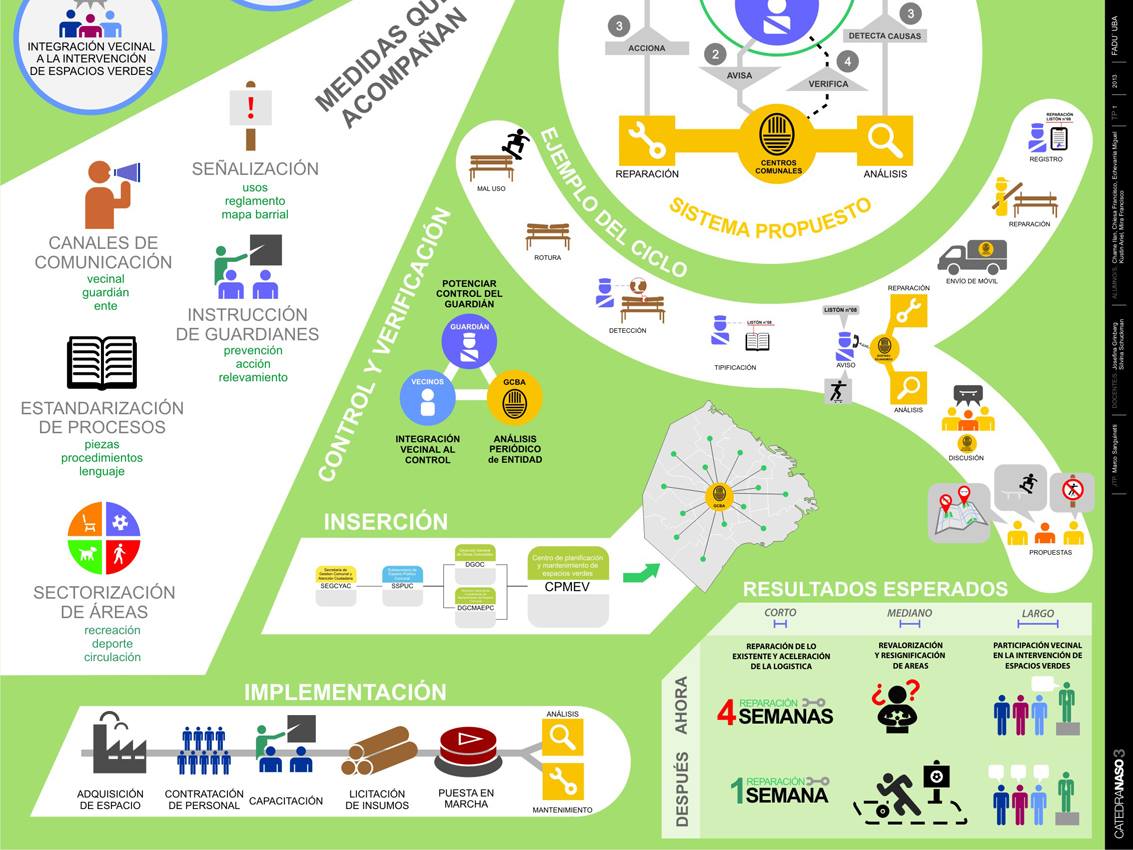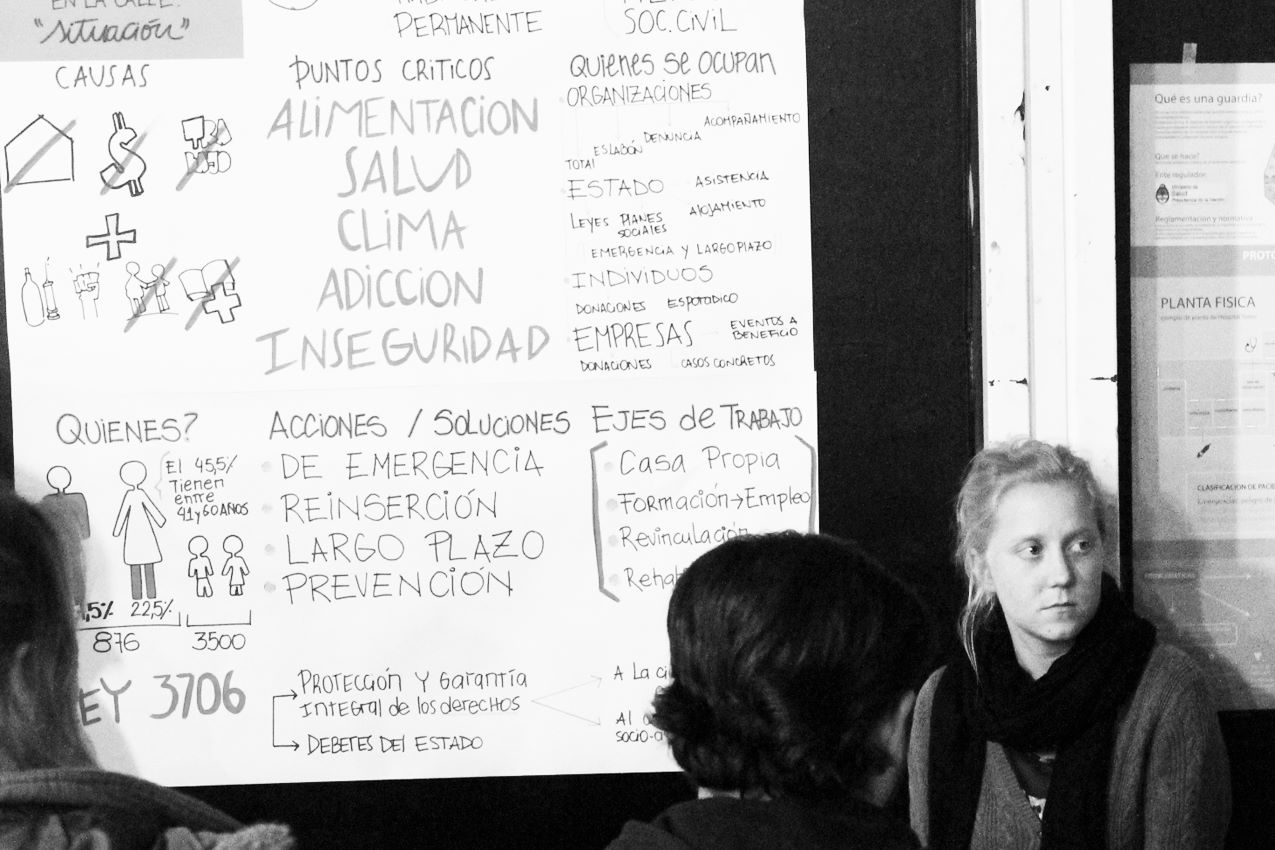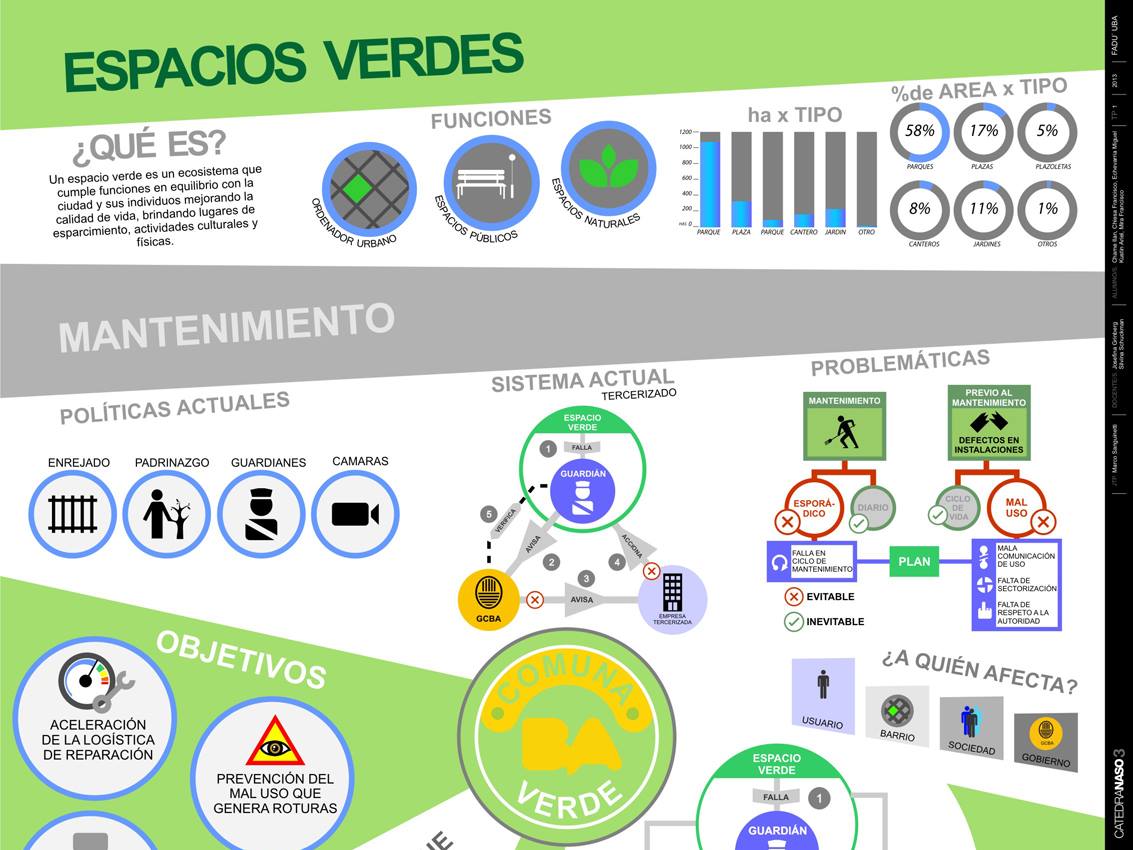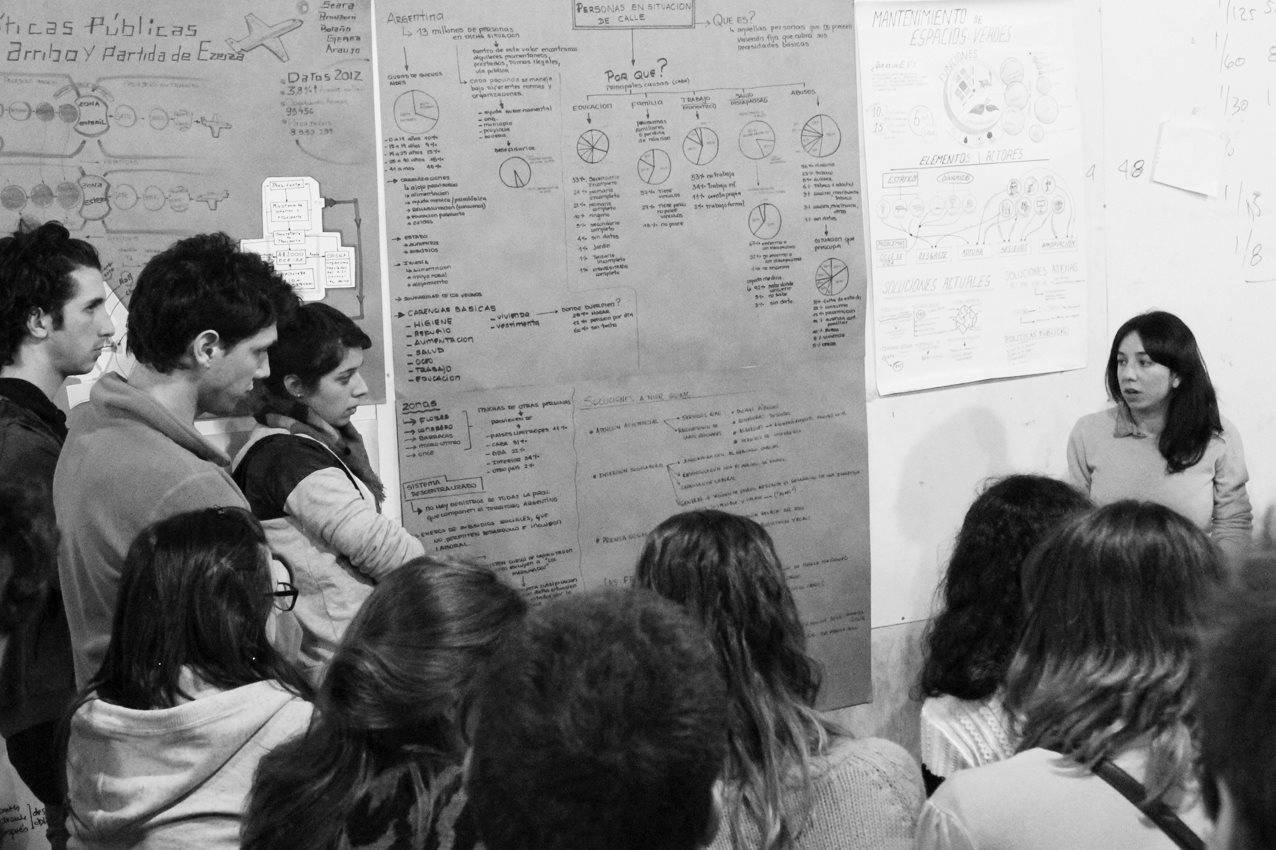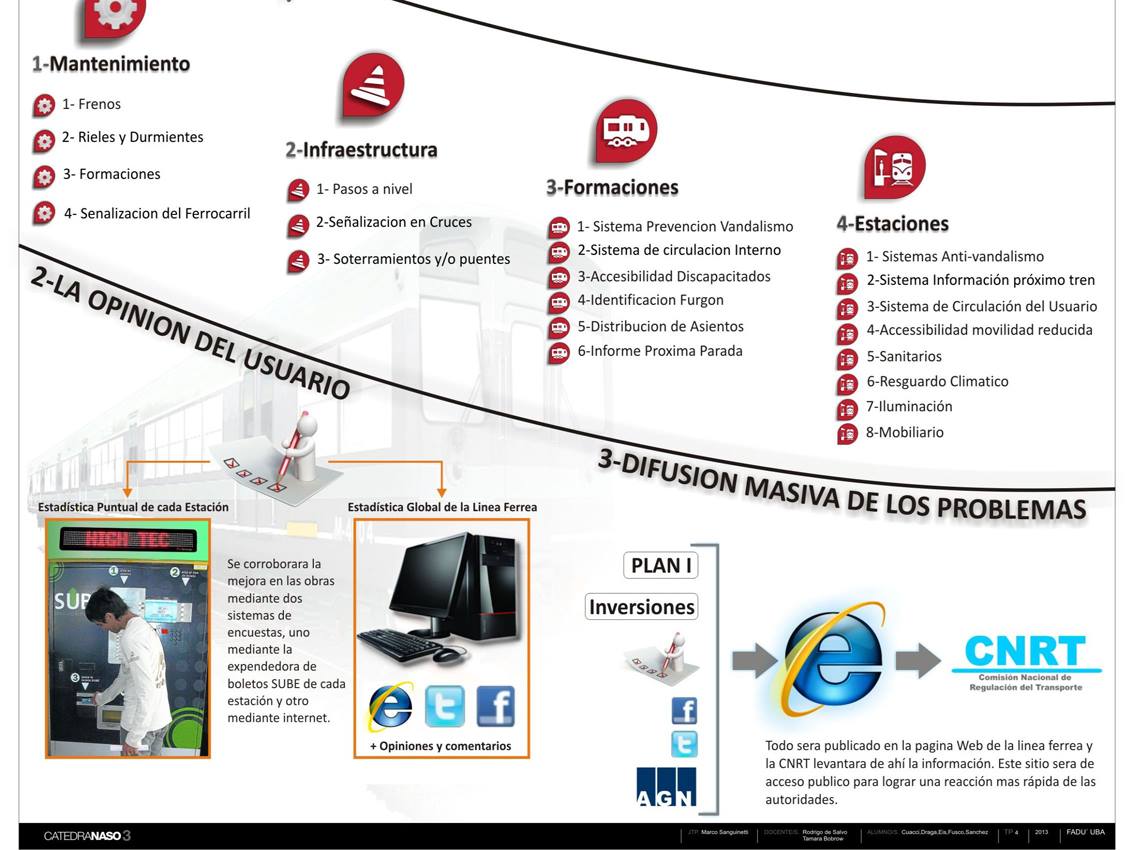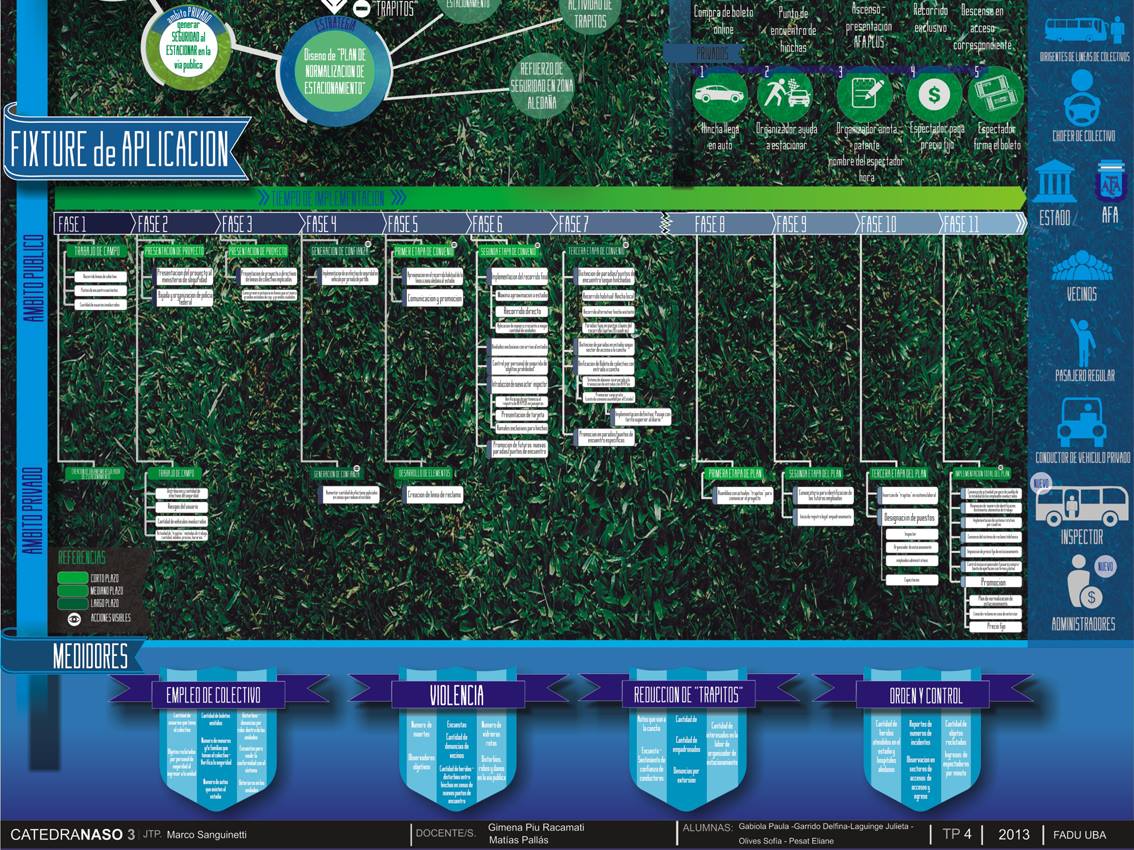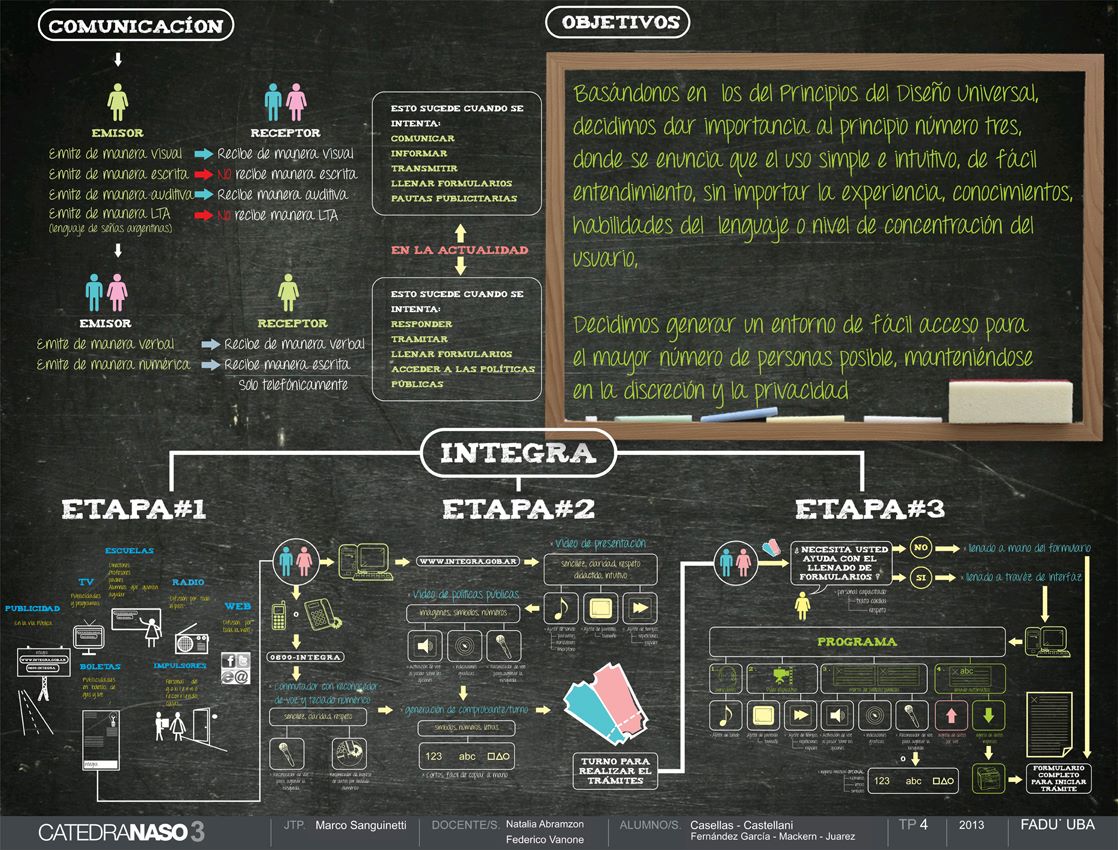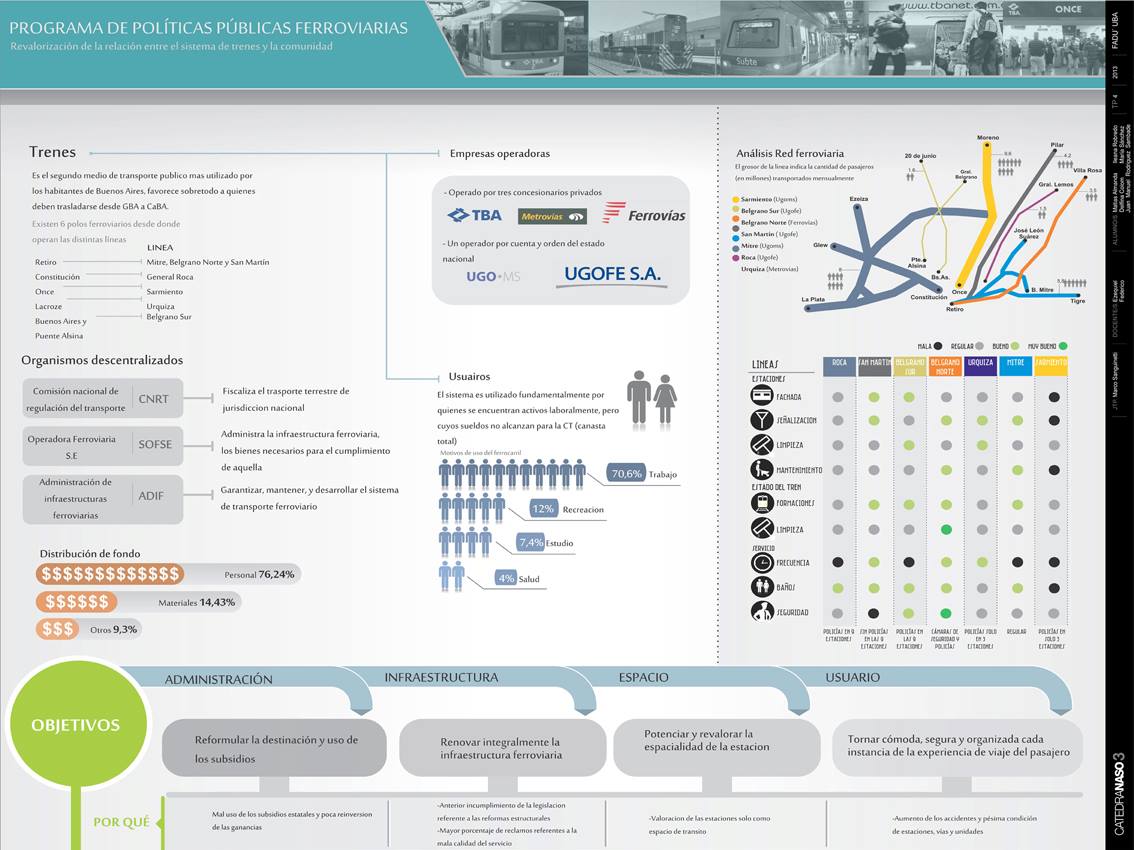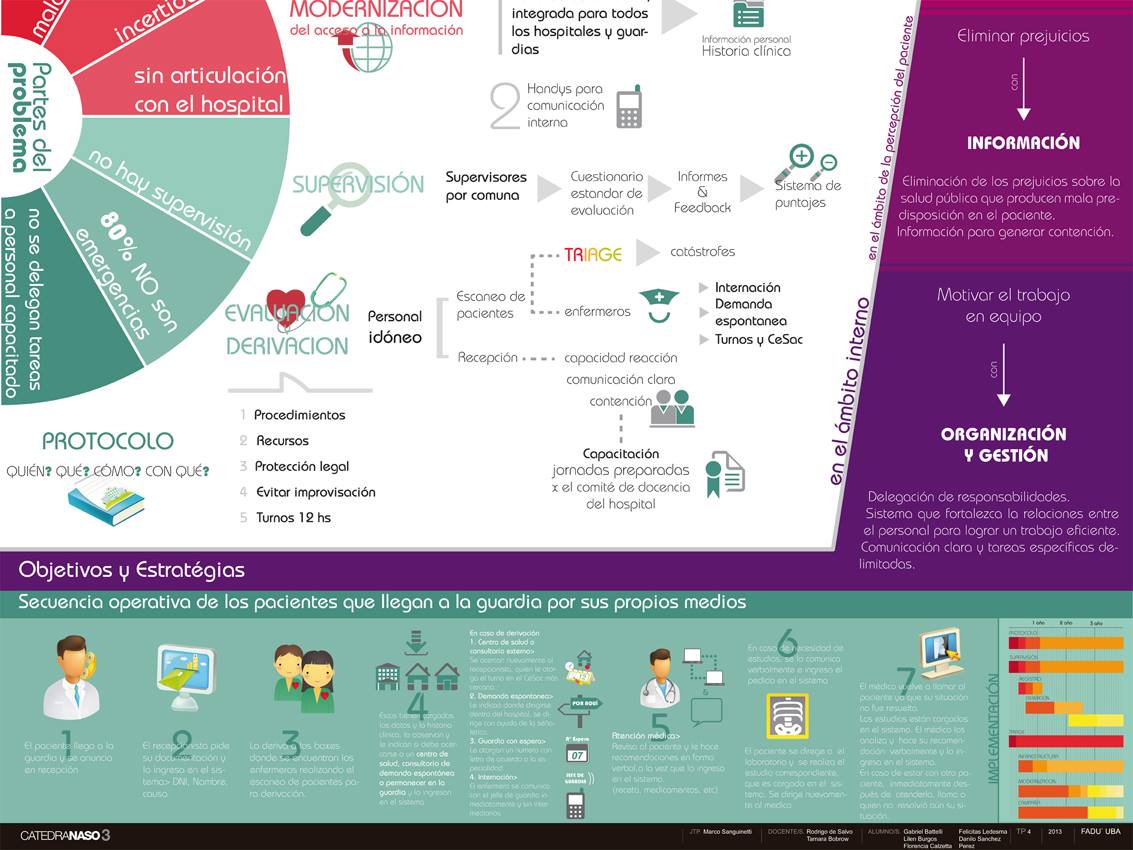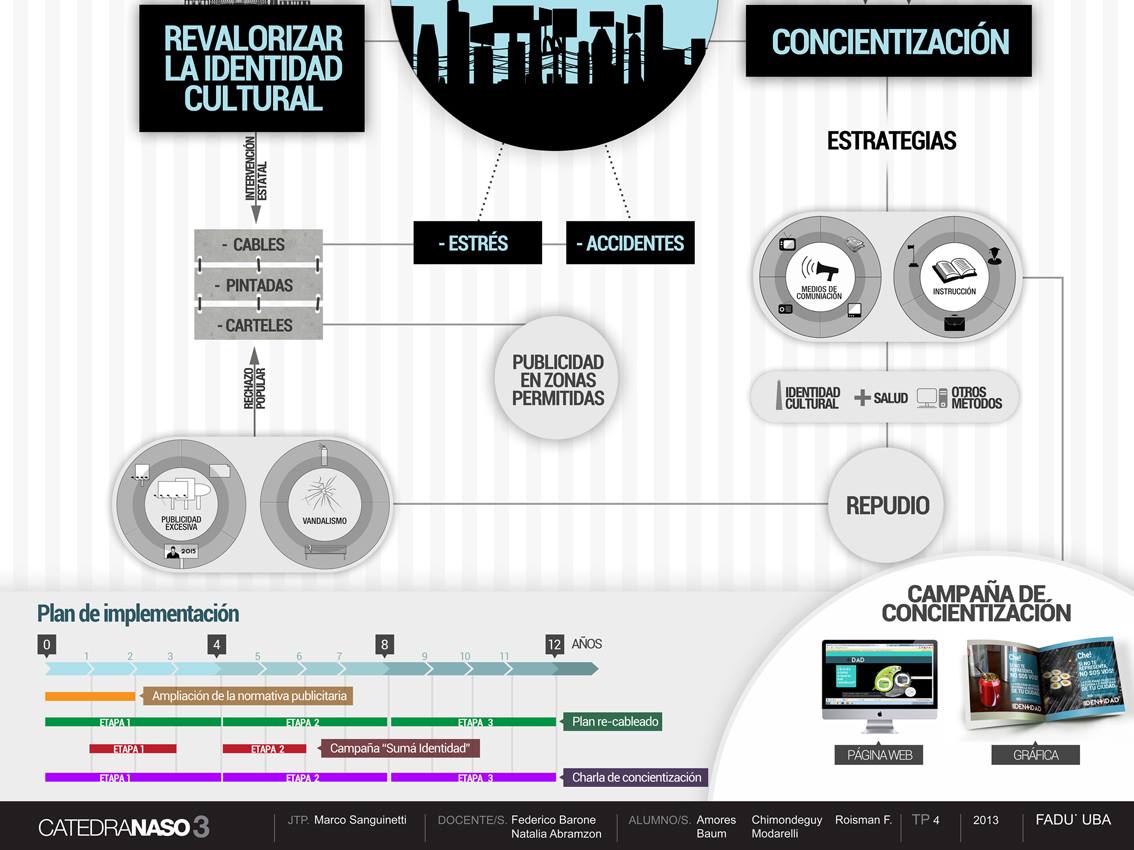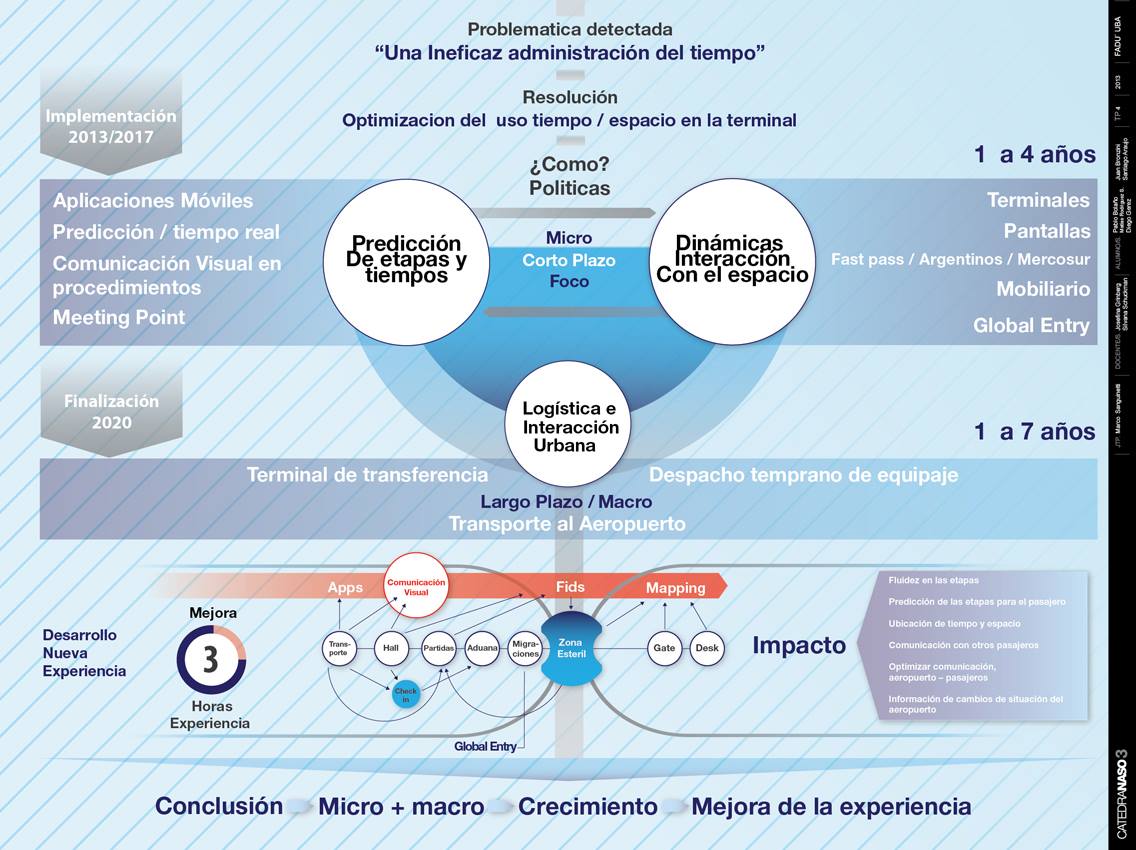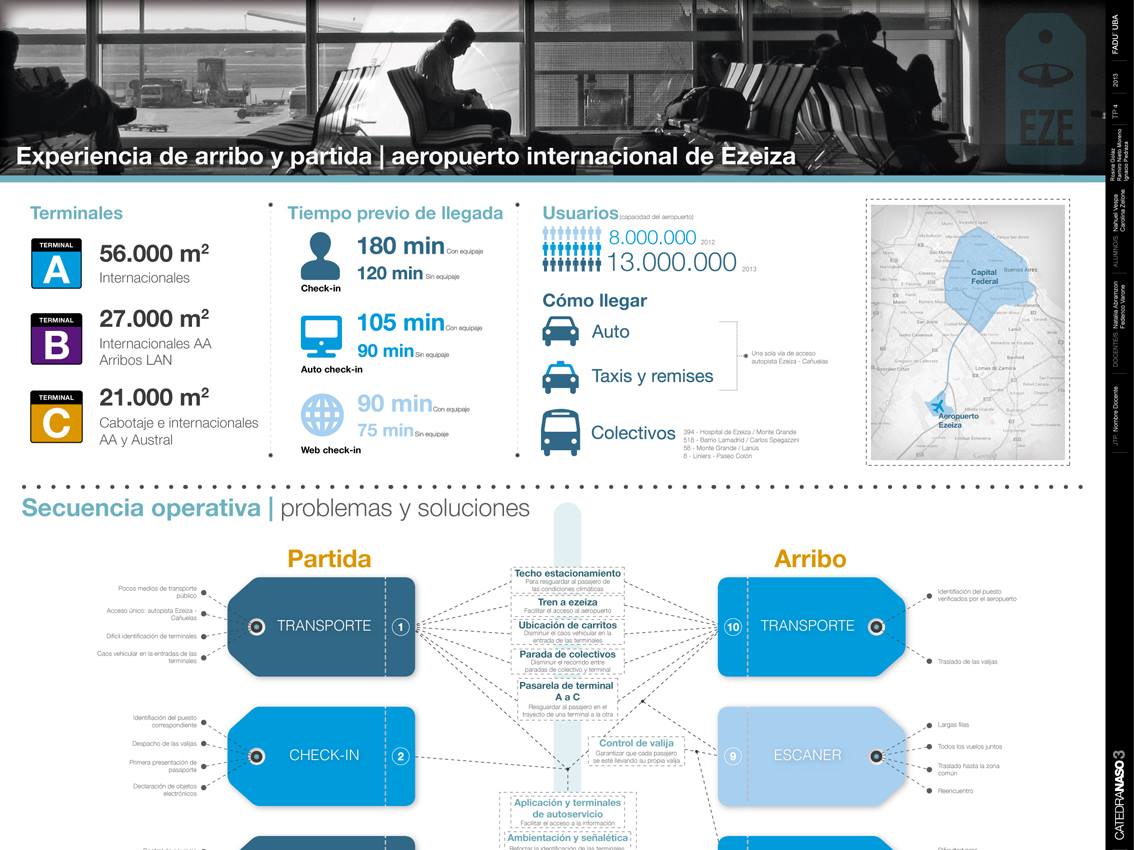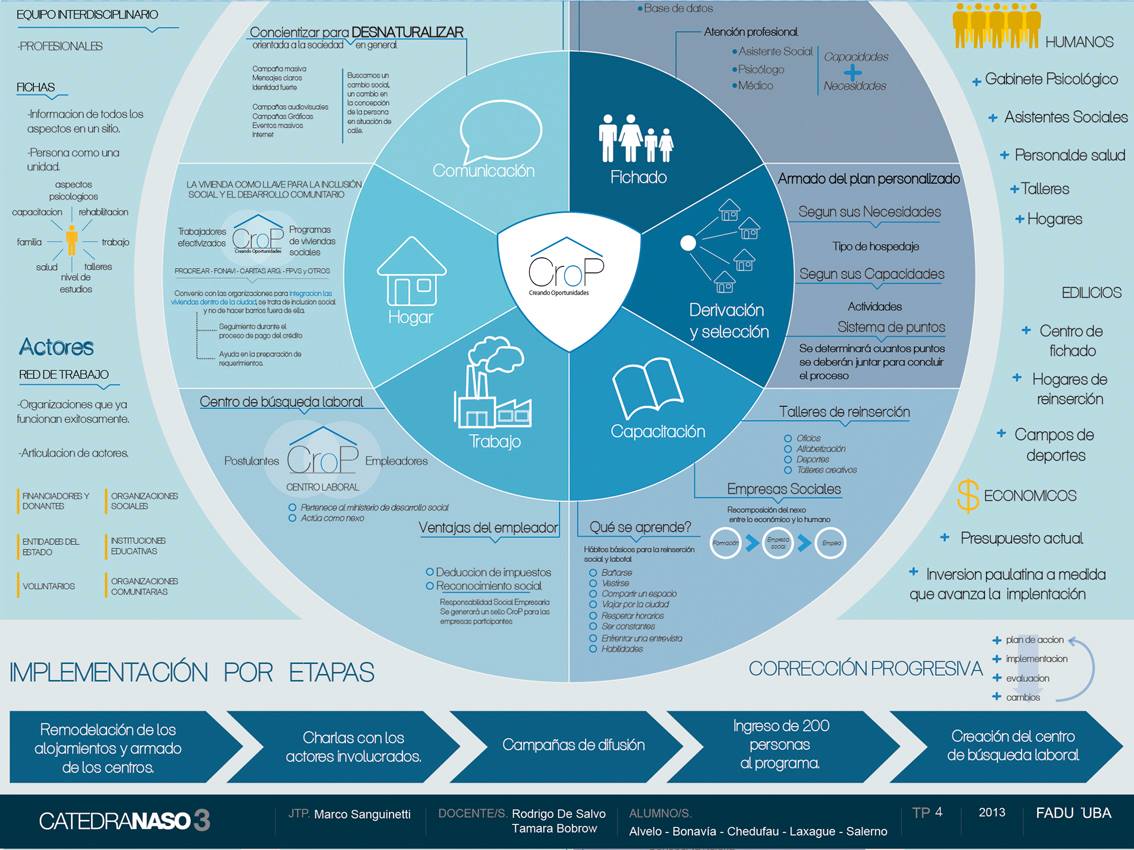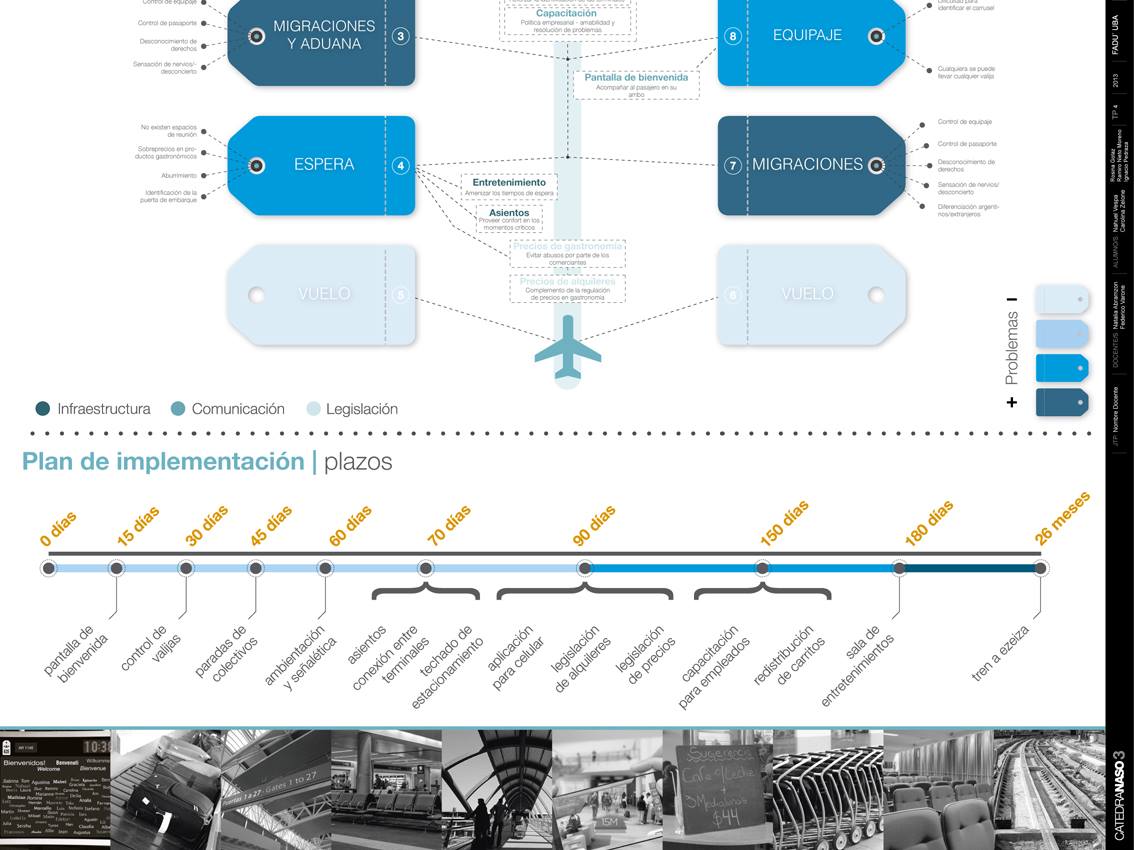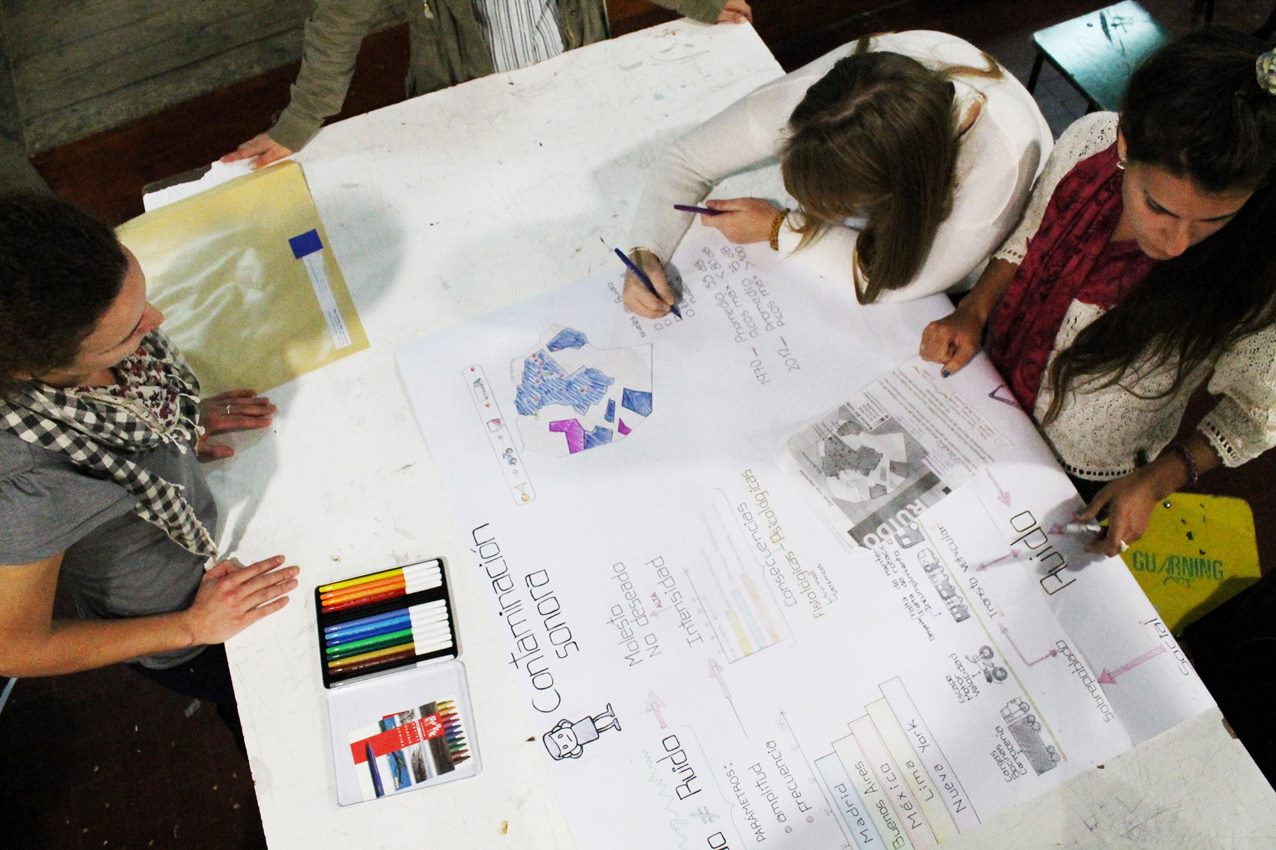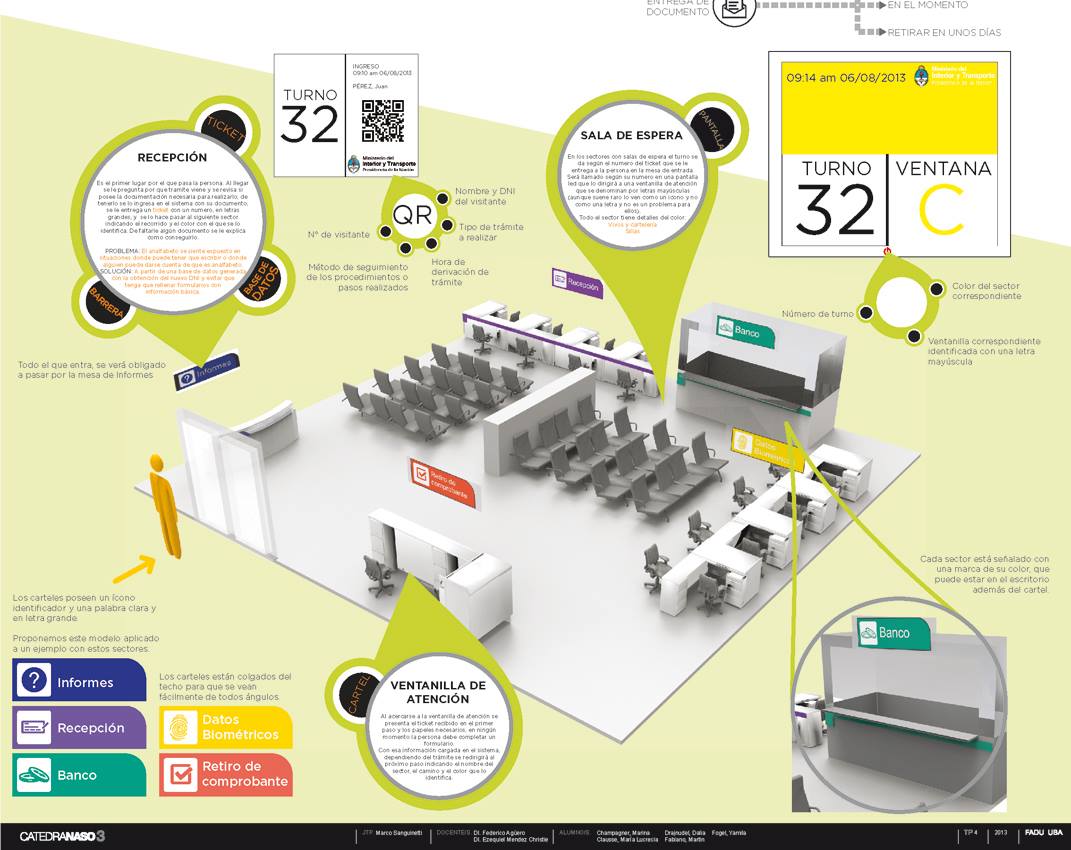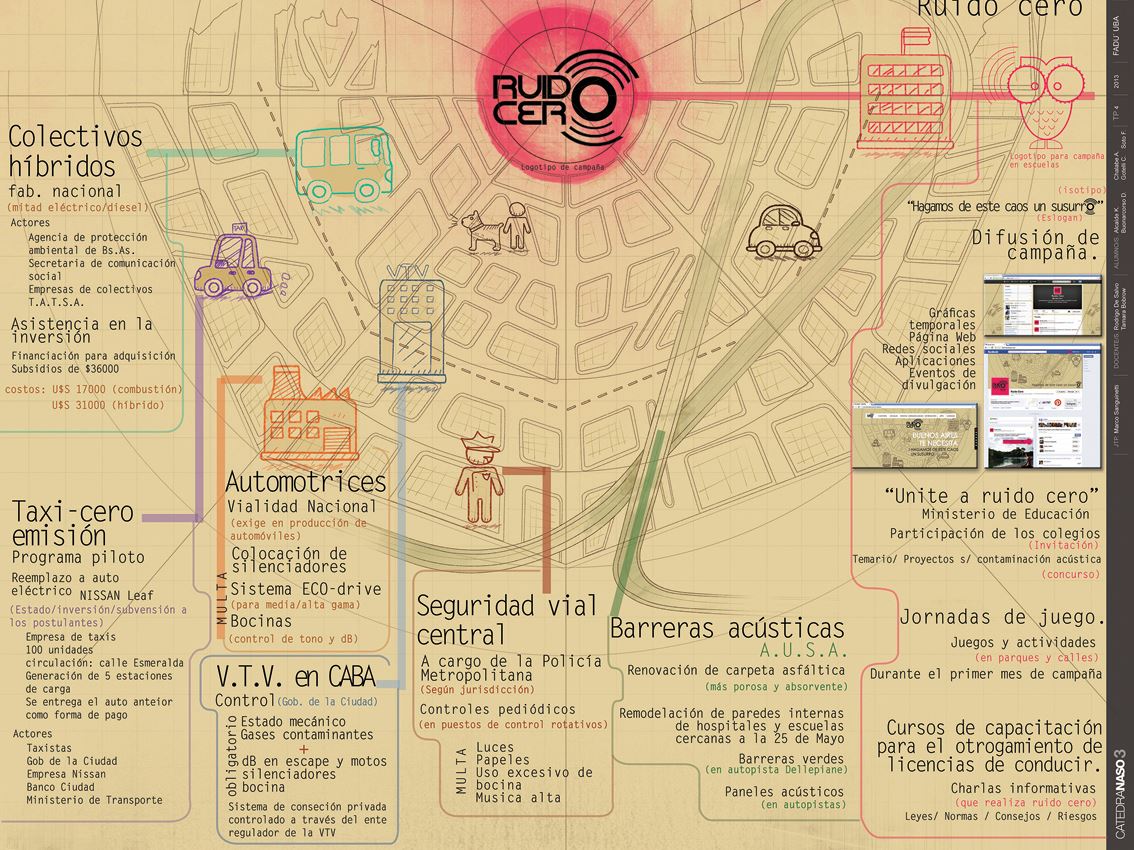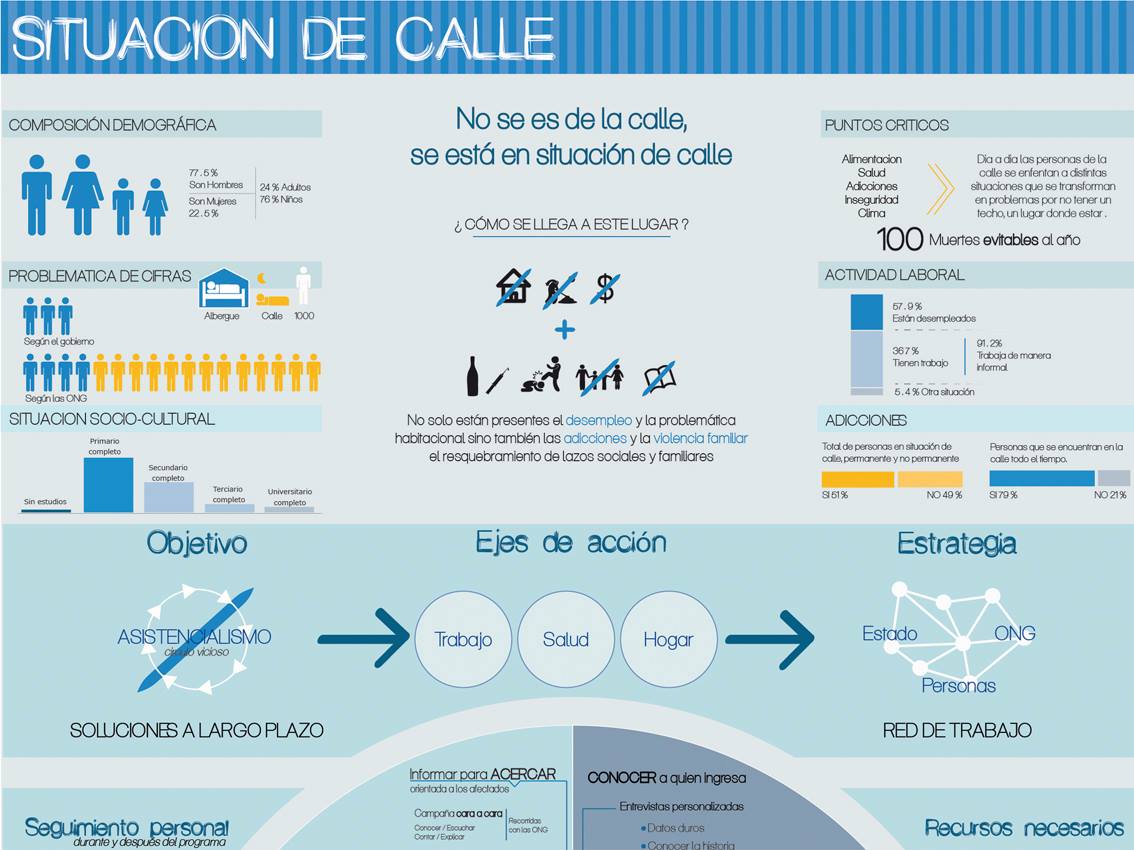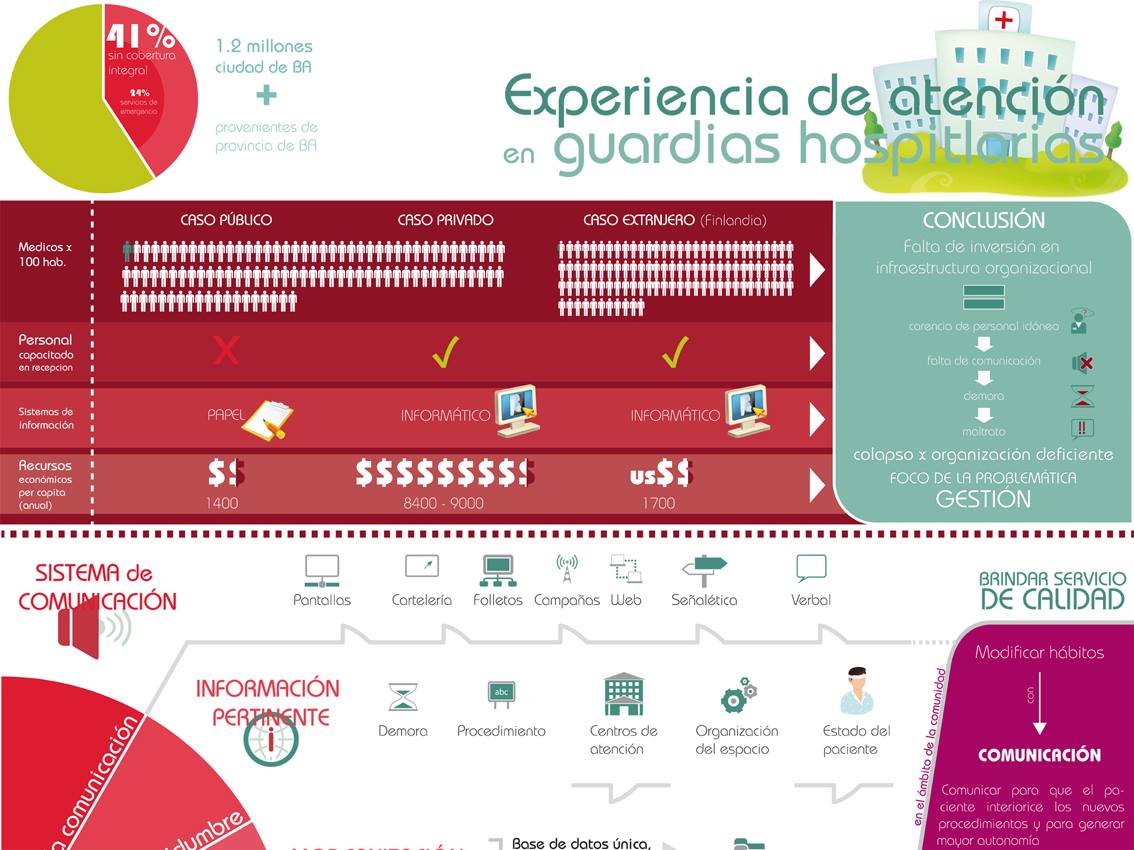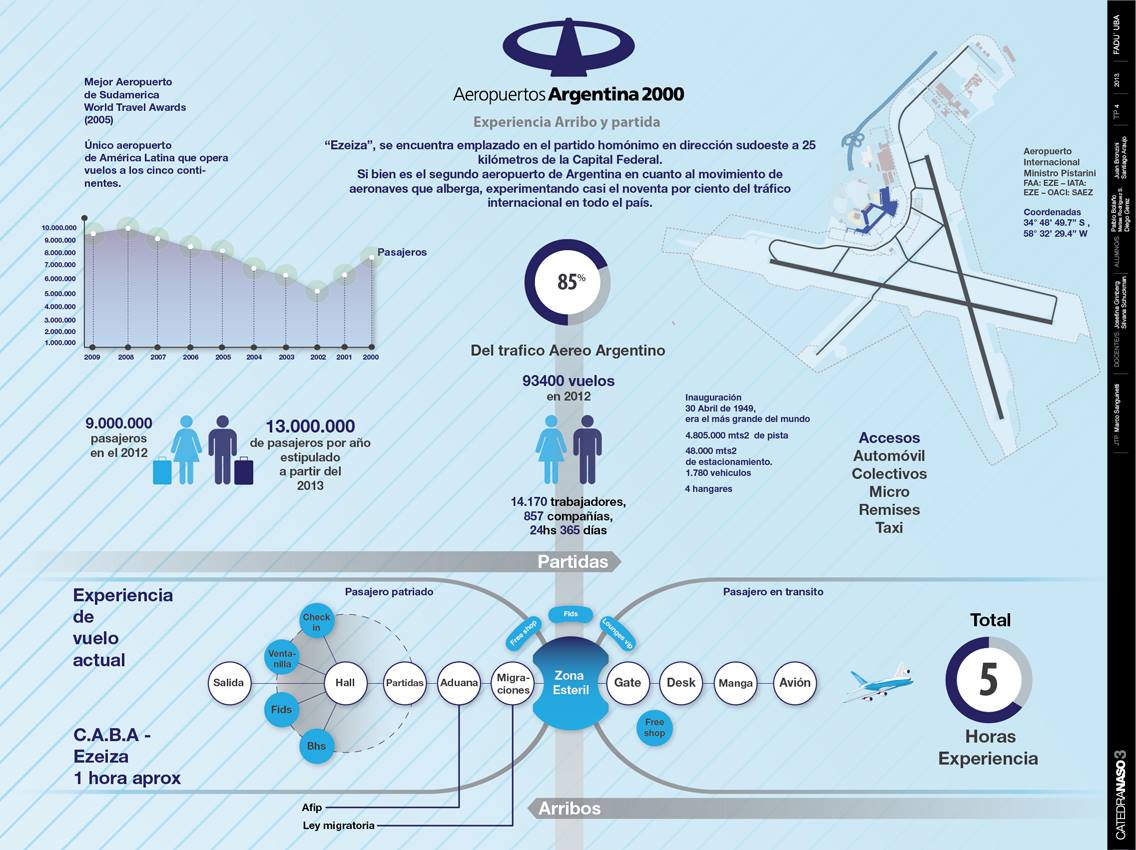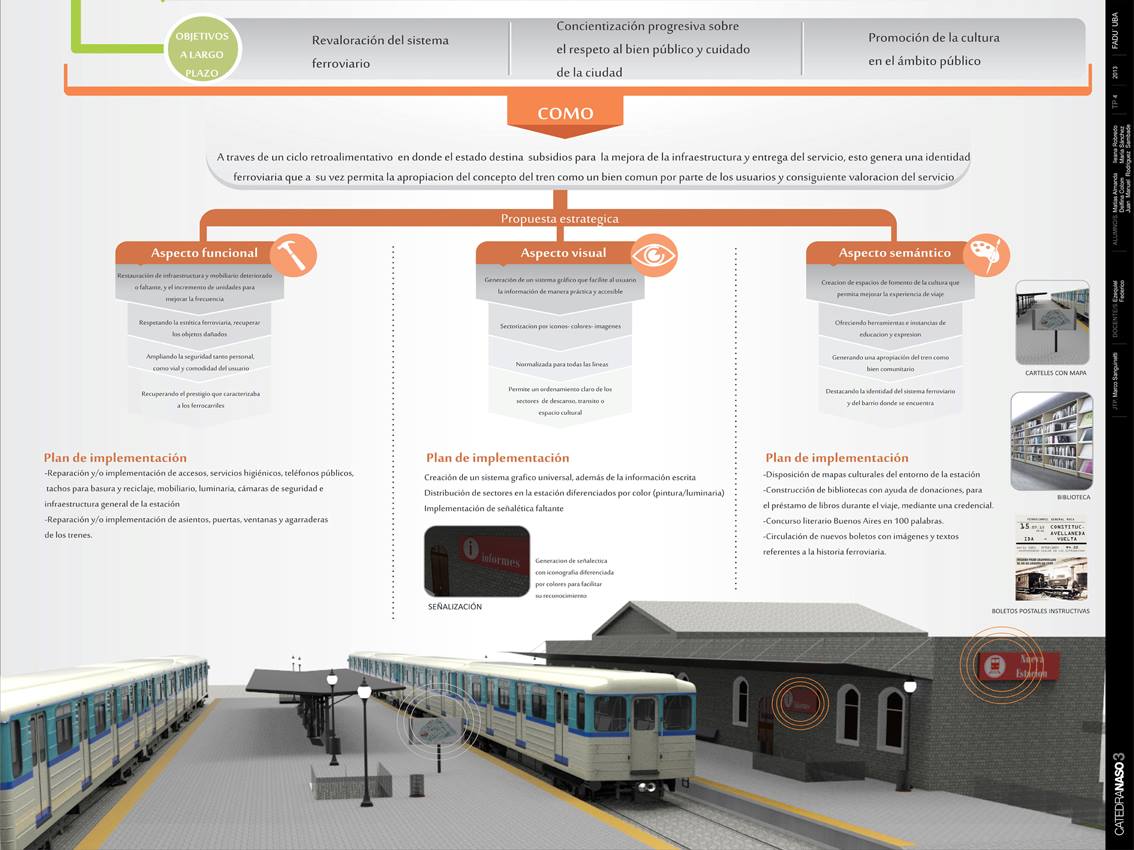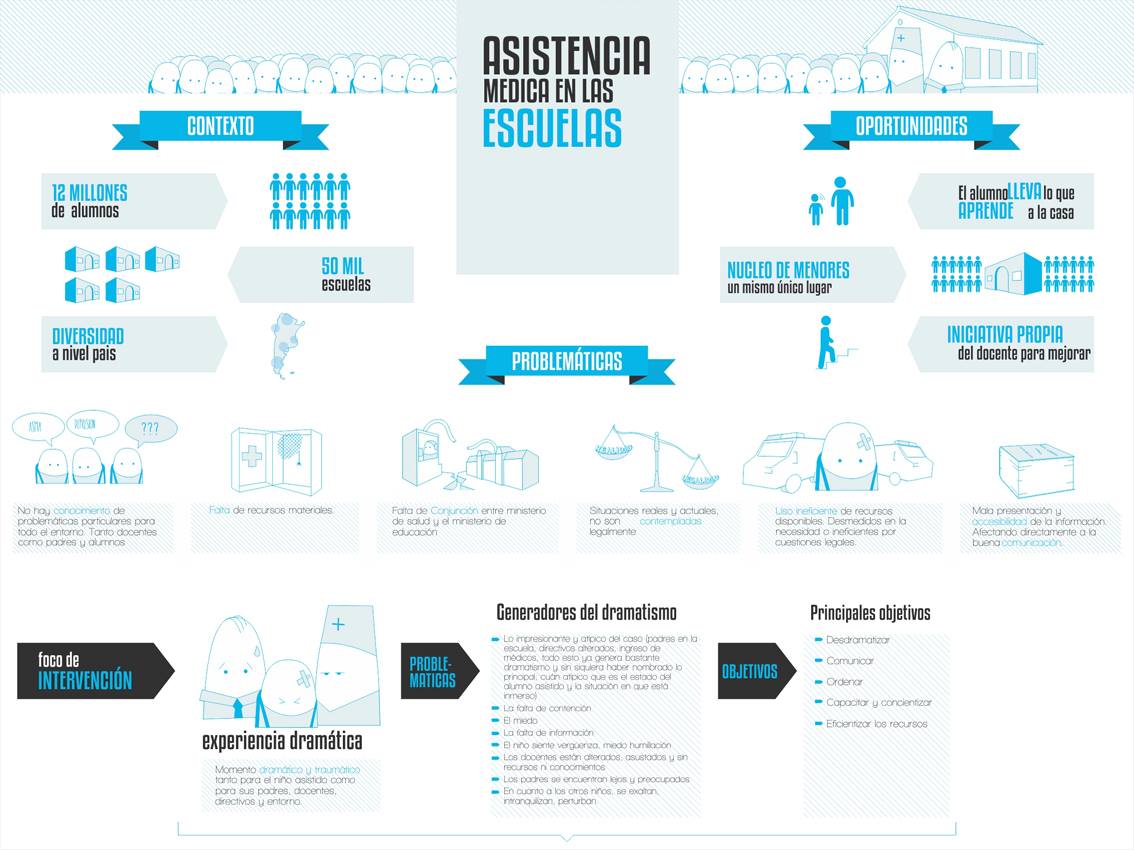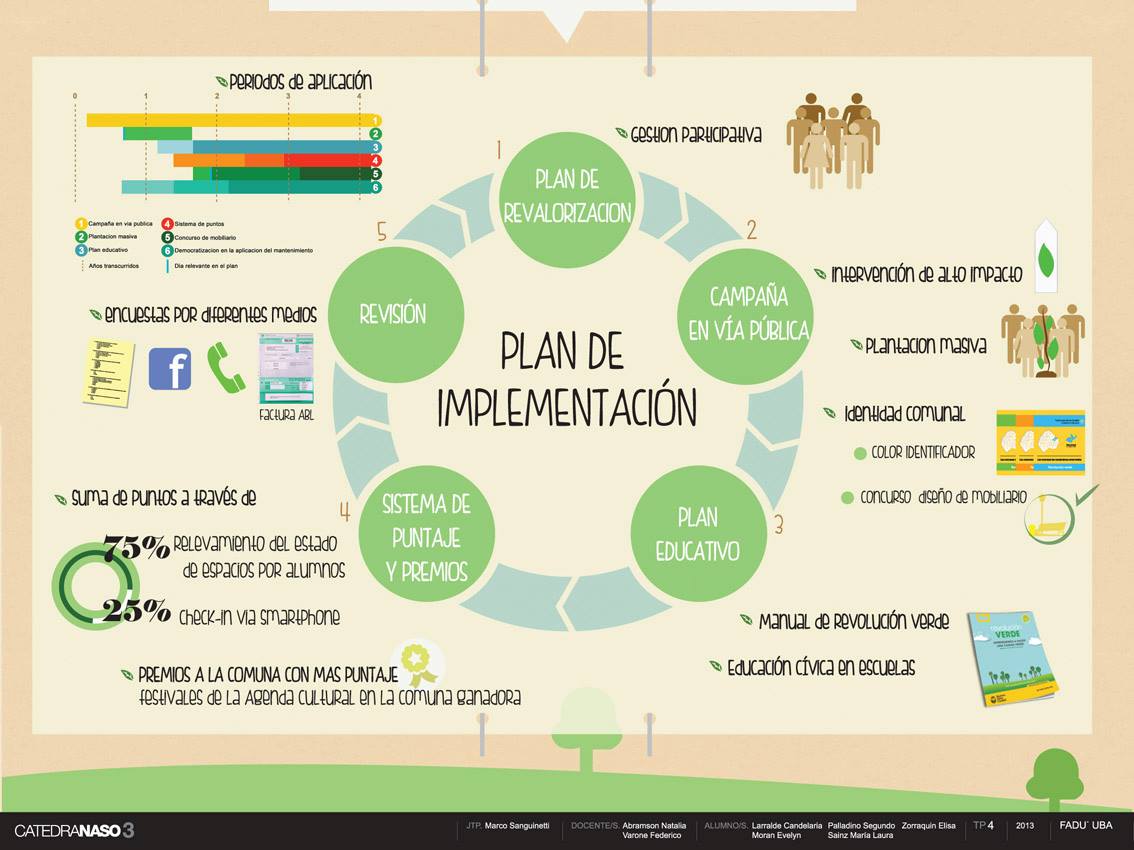Design 5, 2013 Catedra Naso. 2011 . FADU
During the last days of June and the first days of July 2013, TP4 was developed: Design of public policies. There, the students pretended to be part of government advisory teams, to propose solutions to problems that affect society. The challenge was to develop proposals in the form of strategic action systems. —— This experience did not include the development of material objects, something that is new for Industrial Design workshops. But it should not be ignored that the presence of this exercise in the plan of the course was possible thanks to the existence of five other complementary exercises, where the material object is present. —— 125 students formed 25 teams composed of 5 members each. From the Chair, the topics to be addressed in each team were assigned. The topics were: 1. Improvement of the arrival / departure experience in Ezeiza, 2. Improvement of the train transport experience, 3. Improvement of the experience of attendance to football stadiums, 4. Improvement of care in hospital guards. , 5. Prevention and medical assistance to children in school, 6. Maintenance of green spaces, 7. Solutions for people in street situations, 8. Plan of action for emergencies due to floods, 9. Reduction of noise pollution, 10. Reduction of visual pollution, 11. Procedures and personal management for illiterate people, 12. Healthy eating plan, 13. Improvement of quality of life for the elderly. —— The students were guided to work in an initial stage of research. There, they analyzed scenarios, actors and resources, surveyed similar experiences and sought to identify opportunities. Then, they went through a stage of strategic development, where they defined a cut of the field of action, developed a map of objectives, presented proposals of actions and a brief plan of implementation and subsequent evaluation of results. —— The final delivery was formalized through the following components: 1. A sheet of 80cmx120cm, with an infographic of the project; 2. An A3 folder, with the complete investigation, the strategic proposal and the corresponding annexes; 3. A 3 minute video with the synthesis of the work developed; 4. The oral presentation, in 3 minutes, accompanied by 10 projected images. —— Teaching team D3 2013: Marco Sanguinetti, Rodrigo de Salvo, Matías Pallás, Josefina Grinberg, Natalia Abramzon, Ezequiel Méndez Christie, Gimena Piu Racamati, Tamara Bobrow, Silvana Schuckman, Federico Varone and Federico Agüero.

